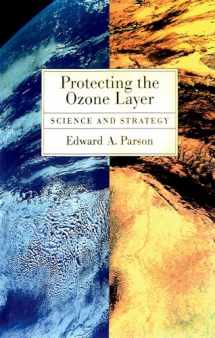
Protecting the Ozone Layer: Science and Strategy (Environmental Science)
Book details
Summary
Description
This book is the first comprehensive history of international efforts to protect the ozone layer, the greatest success yet achieved in managing human impacts on the global environment. Its arguments about how this success was achieved are both theoretically novel and of great significance for the management of other global problems, particularly global climate change. The book provides an account of the ozone-depletion issues from the first attempts to develop international action in the 1970s to the mature functioning of the present international regime. It examines the parallel developments of politics and negotiations, scientific understanding and controversy, technological progress, and industry strategy that shaped the issue's development and its effective management. In addition, the book offers important new insights into how the interactions among these domains influenced the formation and adaptation of the ozone regime. Addressing the initial formation of the regime, the book argues that authoritative scientific assessments were crucial in constraining policy debates and shaping negotiated agreements. Assessments gave scientific claims an ability to change policy actors' behavior that the claims themselves, however well known and verified, lacked. Concerning subsequent adaptation of the regime, the book identifies a series of feedbacks between the periodic revision of chemical controls and the strategic responses of affected industries, which drove rapid application of new approaches to reduce ozone-depleting chemicals. These feedbacks, promoted by the regime's novel technology assessment process, allowed worldwide use of the chemicals to decline further and faster than even the boldest predictions, by nearly 95 percent within ten years.


We would LOVE it if you could help us and other readers by reviewing the book
Book review




